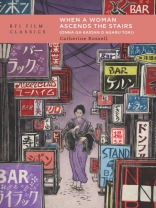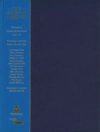Mikio Naruse’s When A Woman Ascends The Stairs (1960) combines high melodrama with modernist film language, telling the story of Keiko, a bar hostess struggling to succeed in Tokyo’s Ginza district. Catherine Russell’s study of the film provides an in-depth analysis of Naruse’s distinctive filmmaking, from his use of two-shots in confined spaces, unique lighting techniques, and his "invisible" and "rhythmic" editing style. She analyses the recurring motif of a woman’s white-stockinged feet climbing stairs, considering how this symbolizes the social dynamics of the high-class Japanese sex industry that sustains hostess bar culture. Russell goes on to argue that the film is a late woman’s film which engages with the institutional barriers to woman’s success in postwar Japan. She situates the film within the trajectory of Naruse’s career and analyses how his social critique is balanced with an aestheticization of a harsh and brutally gendered world, creating an affective tension that is symptomatic of Naruse’s own position as an industrial worker.
Catherine Russell
When a Woman Ascends the Stairs (Onna ga kaidan o agaru toki) [PDF ebook]
When a Woman Ascends the Stairs (Onna ga kaidan o agaru toki) [PDF ebook]
Mua cuốn sách điện tử này và nhận thêm 1 cuốn MIỄN PHÍ!
Ngôn ngữ Anh ● định dạng PDF ● Trang 88 ● ISBN 9781839026454 ● Nhà xuất bản Bloomsbury Publishing ● Được phát hành 2025 ● Có thể tải xuống 3 lần ● Tiền tệ EUR ● TÔI 10059530 ● Sao chép bảo vệ Adobe DRM
Yêu cầu trình đọc ebook có khả năng DRM












